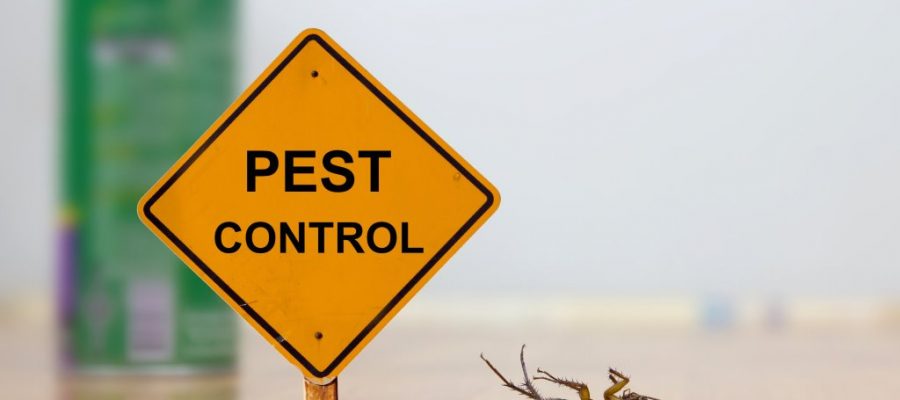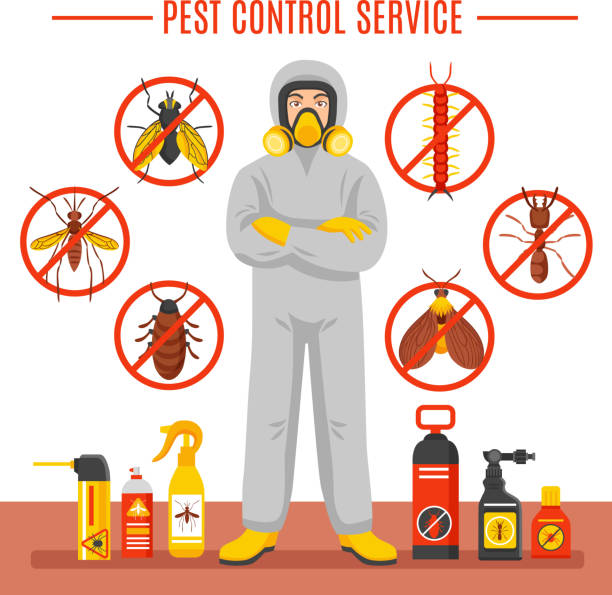Eco-Friendly Parasite Control Approaches for Handling Wild Animals in Urban Areas
Urban areas often find themselves at the intersection of human task and wild animals, causing unique challenges in insect management. Environmentally friendly methods emphasize lasting conjunction, using strategies such as environment modification and all-natural repellents to mitigate human-wildlife disputes. These approaches not only shield the setting yet also enhance community engagement in wildlife monitoring. As urban populaces remain to grow, understanding the characteristics of wildlife communications ends up being increasingly critical. What cutting-edge techniques can be executed to guarantee both environmental balance and city safety and security? Exploring this concern reveals an engaging landscape of potential options.
Understanding Urban Wildlife Dynamics
Comprehending Urban Wild animals Dynamics is essential for developing effective and green insect control techniques. Urban areas are progressively becoming environments for numerous wild animals types, driven by factors such as environment fragmentation, food availability, and human infringement. Recognizing these characteristics permits for a nuanced strategy to pest administration that lines up with environmental principles.
Urban wild animals commonly includes varieties such as raccoons, squirrels, and birds, which adjust to city atmospheres, discovering particular niches in eco-friendly areas, parks, and even suburbs. Their presence can result in disputes with humans, specifically when they exploit human sources for food and sanctuary. Recognizing the habits and eco-friendly duties of these varieties notifies techniques that lessen negative interactions while advertising biodiversity.
Additionally, recognizing the interdependencies within urban communities aids in recognizing critical locations for habitat preservation and remediation. This expertise contributes to the advancement of integrated pest monitoring (IPM) methods that take into consideration the ecological equilibrium, thereby minimizing dependence on hazardous chemicals. By fostering coexistence in between people and urban wildlife, cities can create much healthier environments that profit both citizens and neighborhood ecosystems, leading the way for lasting urban living.
All-natural Repellents and Deterrents
Natural repellents and deterrents supply a lasting option to standard parasite control techniques by using the power of nature to maintain undesirable species away. These environmentally friendly solutions generally make use of plant-based ingredients, crucial oils, and other normally occurring materials that prevent parasites without harming the setting.
One efficient natural repellent is peppermint oil, which is recognized to drive away rats and pests. Its strong scent is unpleasant to several bugs, making it a prominent option for urban settings. Vinegar and citrus peels can serve as deterrents, as their solid odors are normally unappealing to different wild animals.
Furthermore, diatomaceous earth is a natural powder that can be spread out in locations prone to pest activity, properly dehydrating and preventing pests without posturing dangers to non-target varieties. Moreover, garlic sprays and neem oil are identified for their capacity to fend off a large range of parasites, consisting of both insects and bigger wildlife.
Applying these all-natural repellents not only minimizes reliance on chemical pesticides but additionally promotes a healthier metropolitan ecological community, promoting an extra well balanced coexistence in between human beings and wildlife. By using these techniques, city locations can efficiently handle bug populaces while lessening environmental effect.
Environment Modification Strategies
Efficient habitat alteration methods play an essential role in sustainable parasite management by modifying the environment to make it much less for pest invasions. By recognizing the eco-friendly characteristics of metropolitan areas, building owners can apply tactical modifications that prevent insects while promoting biodiversity.
(Integrated pest management Port Charlotte)One key strategy entails maintaining appropriate hygiene. This includes normal waste elimination, protecting garbage can, and getting rid of standing water to minimize breeding sites for pests and rodents. In addition, landscape design practices such as picking indigenous plants can boost ecological equilibrium, providing habitats for valuable organisms while reducing resources for bugs.
Another vital method is to secure entry points in structures. Checking and repairing fractures in structures, walls, and windows can substantially minimize pest gain access to. In addition, developing physical barriers, such as fencings or plant buffers, can inhibit wild animals movement right into human-inhabited locations.
Integrated Pest Monitoring Practices
Structure upon environment modification methods, incorporated pest administration (IPM) methods use a holistic approach to managing pest populaces while decreasing environmental impact. IPM combines numerous approaches, consisting of biological, social, mechanical, and chemical controls, to achieve effective insect administration.
Biological control entails the intro of all-natural predators or parasites to decrease bug populaces. Cultural practices, such as crop rotation and sanitation, interrupt pest life process and lessen their environments - Pest control service. Mechanical controls, like traps and obstacles, give prompt remedy for parasite stress without chemical treatment
Chemical controls are used as a last resource, focusing on targeted applications that restrict injury to non-target species and the setting. The option of eco-friendly chemicals, when required, is important to the IPM framework. In addition, keeping track of parasite populations and evaluating possible damages helps educate decision-making, making sure that treatments are timely and reliable.
Community Participation and Education And Learning

(Mosquito Misting Systems)Workshops and educational sessions can equip citizens with expertise regarding indigenous types, habitat preservation, and effective non-toxic insect administration methods. Collaboration with colleges, local companies, and federal government companies even more boosts instructional outreach, guaranteeing that necessary info reaches diverse target markets.
Moreover, community-led campaigns, such as community clean-up days and environment reconstruction jobs, not only advertise biodiversity yet also reinforce neighborhood connections. Pest Control. By motivating locals to share their experiences and observations, neighborhoods can develop targeted strategies that attend to details neighborhood insect problems
Incorporating responses from locals right into bug administration prepares makes it possible for a more receptive and flexible strategy to wild animals obstacles. Inevitably, notified and engaged areas are essential to accomplishing long-term success in environmentally friendly bug control, bring about healthier urban environments that respect both human and ecological demands.

Conclusion
In conclusion, environment-friendly bug control comes close to deal sustainable solutions for managing metropolitan wild animals. By focusing on environment alteration, using all-natural repellents, and carrying out incorporated bug management methods, communities can foster an unified coexistence with get redirected here local animals.